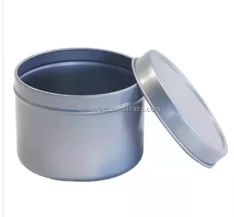
Jan . 01, 2025 10:17 Back to list
Tin Plate Manufacturer and Supplier for Quality Metal Products
The Tin Plate Supplier Factory A Comprehensive Overview
In the rapidly evolving landscape of manufacturing, tin plate production stands out as a vital industry that facilitates numerous applications across various sectors. From food packaging to construction materials, the significance of high-quality tin plates cannot be overstated. This article delves into the workings of a tin plate supplier factory, its processes, benefits, and its contribution to the economy.
Understanding Tin Plates
Tin plates are thin sheets of steel coated with a layer of tin. This combination not only provides durability but also enhances resistance to corrosion, making tin plates ideal for use in environments where they are exposed to moisture. Common applications include food and beverage cans, storage containers, and a variety of other packaging solutions. The tin coating protects the steel substrate from rusting while ensuring that the contents remain safe and uncontaminated.
The Manufacturing Process
The manufacturing of tin plates involves several key steps, which can be broken down as follows
1. Steel Preparation The process begins with high-quality rolled steel sheets, which are cleaned to remove any impurities. This is crucial to ensure that the tin coating adheres properly and the final product maintains its integrity.
2. Cold Rolling The cleaned steel sheets undergo cold rolling to achieve a desired thickness. This step not only improves the surface finish but also enhances the mechanical properties of the steel.
3. Annealing After rolling, the steel is annealed, a heat treatment process that restores ductility and improves formability. This step prepares the steel for the subsequent tinning process.
4. Tinning The tinning process involves immersing the annealed steel sheets in molten tin or applying tin through electroplating. This forms a thin but effective coating of tin over the surface, providing the desired protective layer.
5. Finishing and Quality Control Once tinning is complete, the sheets undergo various finishing processes, including cleaning, drying, and inspection. Quality control is paramount; manufacturers test for thickness, adhesion, and overall quality to ensure compliance with industry standards.
tin plate supplier factory

The Role of Tin Plate Supplier Factories
Tin plate supplier factories play a critical role in the supply chain. They not only produce tin plates but also ensure that these products meet the diverse needs of their customers. Some significant functions include
- Customization Depending on client requirements, factories can customize the size, thickness, and surface finish of tin plates, ensuring compatibility with various applications.
- Sustainability Many modern tin plate suppliers are focusing on sustainable practices. The recycling of steel and tin helps reduce environmental impact, as tin plates are entirely recyclable. Factories are also investing in energy-efficient processes to minimize their carbon footprint.
- Supply Chain Management Tin plate suppliers manage a complex supply chain that includes raw material procurement, production scheduling, quality assurance, and distribution. Effective management ensures that clients receive their products on time, which is critical in industries such as food and beverage.
Economic Contribution
The tin plate manufacturing sector contributes significantly to the economy. It provides thousands of jobs, from factory workers to management positions. Moreover, the industry supports numerous ancillary businesses, including raw material suppliers and transportation companies. The demand for tin plates is increasing, fueled by the growing food and beverage industry, which is expanding globally. As more companies recognize the benefits of using tin-coated products for packaging, the economic impacts are likely to grow.
Challenges and Innovations
Like any industry, the tin plate sector faces challenges, including fluctuations in raw material prices and increasing competition from alternative materials. However, innovations in technology and design are presenting new opportunities. Automation and digital processes are improving efficiency, while research into new alloys and coatings is enhancing product performance.
Conclusion
In conclusion, tin plate supplier factories are pivotal in producing essential materials that serve a diverse range of industries. Through strict adherence to quality, sustainability practices, and continuous innovation, these factories meet the growing demands of the market while contributing to economic stability. As the world progresses toward more environmentally friendly practices, the tin plate industry is well-positioned to play a significant role in the future of packaging and manufacturing.
-
New Energy Vehicles with GPT-4 Turbo AI
NewsAug.02,2025
-
Premium 26 Gauge Galvanized Steel Coil Maker | Quality
NewsJul.31,2025
-
GPT-4 Turbo New Energy Vehicles: AI-Driven Efficiency & Smart Mobility
NewsJul.31,2025
-
Electric Vehicles for Sale: New Cars, Used Cars & NIO ES8 Offers
NewsJul.30,2025
-
BYD New Energy Vehicles: Innovative New Cars for a Greener Future
NewsJul.29,2025
-
New Energy Vehicle with High Cost Performance & Endurance
NewsJul.29,2025